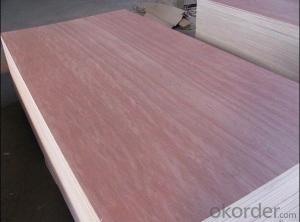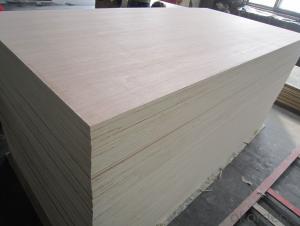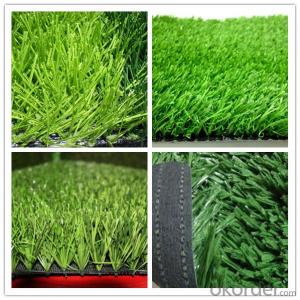3/4 Thick Aluminum Plate
3/4 Thick Aluminum Plate Related Searches
Led Light Bulbs For Ceiling Fixtures Led Lamps For Ceiling 42 In Ceiling Fan With Light Aluminum Coil Stock For Gutters Aluminum Foil For The Grill Hole Saw For Aluminum Plate Aluminum Tread Plate For Trailer Bow Plate For Aluminum Boat Aluminum Foil For Grow Room Aluminum Foil For Joint PainHot Searches
Stock Price For Aluminum Aluminum Coil Stock For Sale Aluminum Gutter Coil For Sale Used Aluminum Scaffolding For Sale 1/4 Aluminum Plate For Sale Aluminum Bar Stock For Sale Aluminum Round Stock For Sale Aluminum Diamond Plate For Sale Aluminum Scaffolding For Sale Craigslist 6061 Aluminum Plate For Sale Aluminum Dock Plate For Sale 7075 Aluminum Plate For Sale Aluminum Tread Plate For Sale Aluminum Checker Plate For Sale Aluminum Plate For Sale Near Me Plate Aluminum For Sale Aluminum Plate For Sale Aluminum Square Stock For Sale Aluminum Flat Stock For Sale Billet Aluminum Stock For Sale3/4 Thick Aluminum Plate Supplier & Manufacturer from China
Okorder.com is a professional 3/4 Thick Aluminum Plate supplier & manufacturer, offers integrated one-stop services including real-time quoting and online cargo tracking. We are funded by CNBM Group, a Fortune 500 enterprise and the largest 3/4 Thick Aluminum Plate firm in China.Hot Products
FAQ
- Yes, aluminum sheets are widely used in boat building due to their lightweight, durability, corrosion resistance, and ease of maintenance.
- I need help with this question for a report i'm doing, it's about recycling aluminium, please could you give me some reasons why to recycle aluminium and eg.saves energy, and how it does eg. saves energy by...Thanks a lot this will help me loads.P.S this is just a report for my science project.
- Mining of metals causes huge environmental damage, polluting water and using vast amounts of energy which has a large environmental cost. savingiceland.puscii.nl/?language... This is an activist site fighting Aluminium mining in Iceland. Metals like oil and other materials are also finite, they are not endless, so they're getting more expensive and may run out. Metals are very useful and shouldn't be wasted. I always pick up ally cans in the street and put them in the nearest recycling bin.
- I get to do an aluminum blank for a fence and I am curious whether I can put slots in it with the router?I am not sure how thick it is, may say 3/16's.
- Yes you can use a router on aluminium. Use some kind of a fence, a piece of angle iron or a block of hardwood. Use a new bit, an old dull one will cause you problems. Pre-drill smaller holes than the slot width at each end of the slot. Stay back away from the end of the slot about 1/32 of an inch. Make several passes, at a depth of about 1/16 of an inch, per pass. If you can, make the slot with a bit smaller than the finished slot width. Use a 3/16 bit for a 1/4 inch slot. Use a 5/16 bit for a 3/8 inch slot. This will give cleaner slot edges and allow you to accurately make the slot width that you want. You can do this dry, but a little WD-40 oil will give even cleaner slot edges. Also climb mill the last pass on each slot edge to give a better/ smother edge. Climb Milling is pushing the router backwards of the way you normally travel in wood. Ben
- There are several methods for surface cleaning aluminum sheets, depending on the level of dirt or contamination present. Here are some of the most commonly used methods: 1. Mechanical Cleaning: This method involves physically scrubbing the surface of the aluminum sheet using brushes, abrasive pads, or sandpaper. It is effective for removing light dirt, grease, or oxidation. However, caution should be exercised to avoid scratching or damaging the surface. 2. Chemical Cleaning: Chemical cleaning involves the use of specific cleaning agents or solutions to remove dirt, stains, or oxidation from the aluminum sheet. Commonly used chemicals include alkaline cleaners, acidic cleaners, and solvents. It is important to follow the manufacturer's instructions and take necessary safety precautions when working with chemicals. 3. Pressure Washing: Pressure washing utilizes high-pressure water jets to remove dirt, grime, and other contaminants from the surface of aluminum sheets. It is a quick and efficient method, particularly for large or heavily soiled surfaces. However, care should be taken to avoid using excessive pressure, which may dent or damage the aluminum. 4. Electrolytic Cleaning: This method involves the use of an electrolyte solution and an electric current to remove corrosion, oxidation, or tarnish from the aluminum sheet. The sheet is submerged in the electrolyte bath, and the electric current helps to dissolve the contaminants. Electrolytic cleaning is particularly effective for heavily oxidized or tarnished surfaces. 5. Chemical Etching: Chemical etching is a process that uses a combination of chemicals to selectively remove the surface layer of the aluminum sheet. It is commonly used for removing anodized coatings or for creating decorative patterns on the surface. However, this method requires specialized equipment and expertise. It is important to note that the choice of cleaning method should be based on the specific requirements of the aluminum sheet, the level of contamination, and the desired outcome. It is always recommended to consult the manufacturer's guidelines or seek professional advice to ensure the most appropriate and safe cleaning method is used.
- The furnace above is only hot enough to melt lead, but isn't hot enough to melt aluminum. I'm not looking for a blowtorch, or something too expensive or could melt gold, but just something that i can buy and is like the one above but isn't that expensive and can melt aluminum. Thanks!
- Aluminum melts below 1300F These gold and silver melters like the one in the link go to 2000F or more and should work for aluminum. I guess more small melters of metals want to melt gold and silver than aluminum.
- I need to make an aluminum cylinder out of 1/8 6061 plate and tube. I don't have a TIG setup and was considering using Bernzomatic aluminum soldering rods. The cylinder will be pressurized from 20-60 psi. Assuming a clean job, is this pressure ok? How much pressure can the joint take? Also, although the solder does not need flux, should i use it anyway?
- to your setup i might merely persist with the iron. It would not sound like the burden mark downs is going to be properly actually worth the greater suitable probability for a on a regular basis motive force. forged iron is merely greater rugged and can take greater abuse than aluminum. Aluminum has its place yet its no longer in a on a regular basis motive force like it variety of feels you're development.
- The which temperature the aluminum evaporates in vacuum?
- Aluminum boils at 2519 °C (4566 °F) at normal pressure. In a vacuum, it might boil (a little) at 808 °C, but actually this is better known as subliming.
- Calculate the mass in grams of Iodine (I2) that will react completely with 20.4 g of aluminum to form aluminum oxide (AlL3)
- Aluminium oxide? Shouldn't it be Aluminium iodide? 1. Form a balanced equation 3I2 + 4Al - 2Al2I3 2. Number of moles of Al 20.4/(Mr of Al) = 20.4/27 = 0.7555mol 3. Number of moles of I2 0.7555/4 x 3 = 0.5666mol 4. Mass of I2 required = 0.5666 x Mr of I2 = 0.5666 x (127x2) Ans: 143.9164g














































